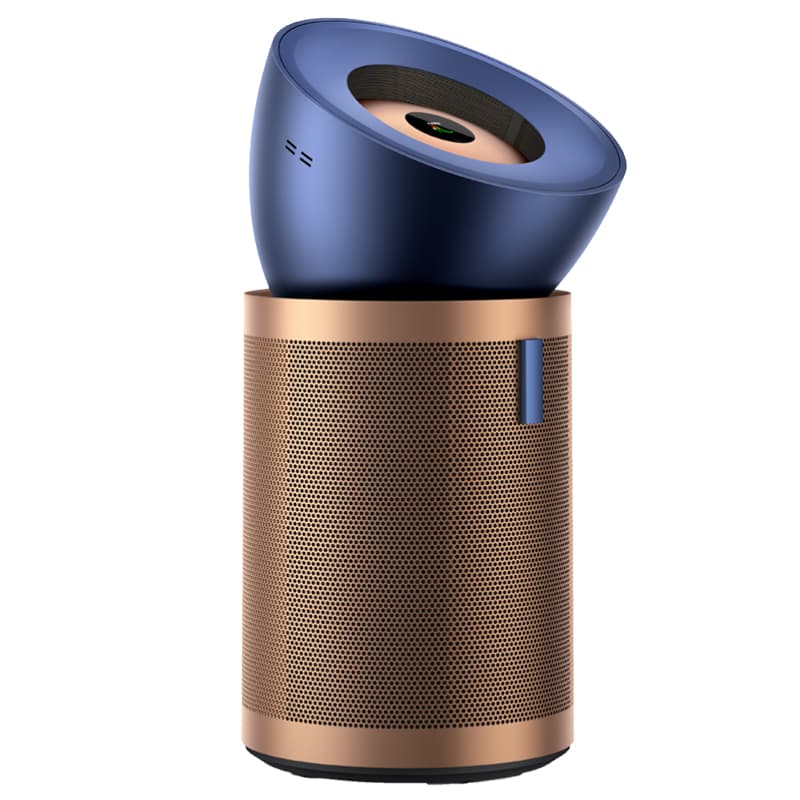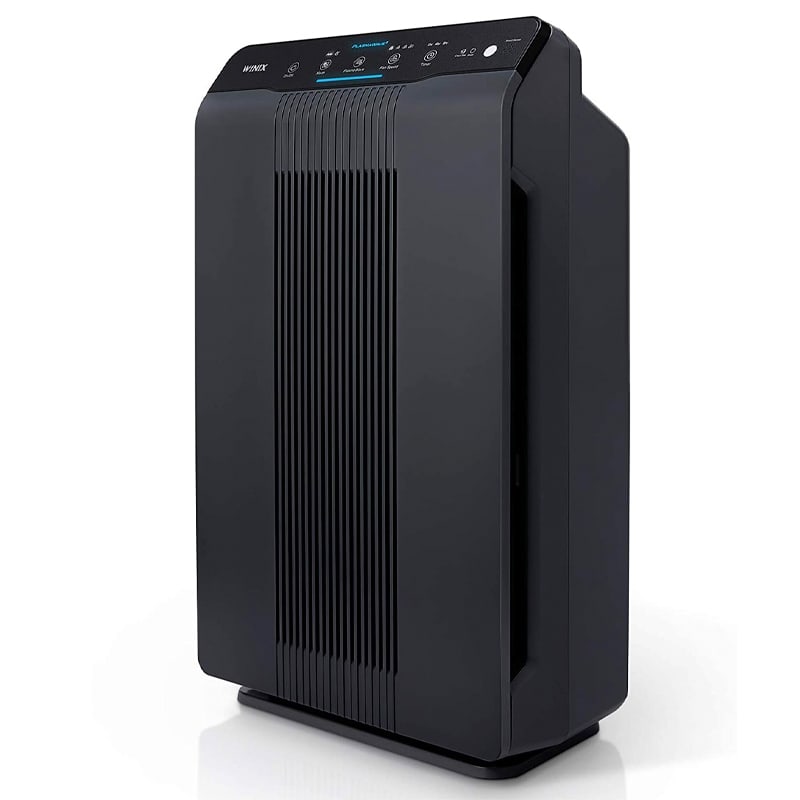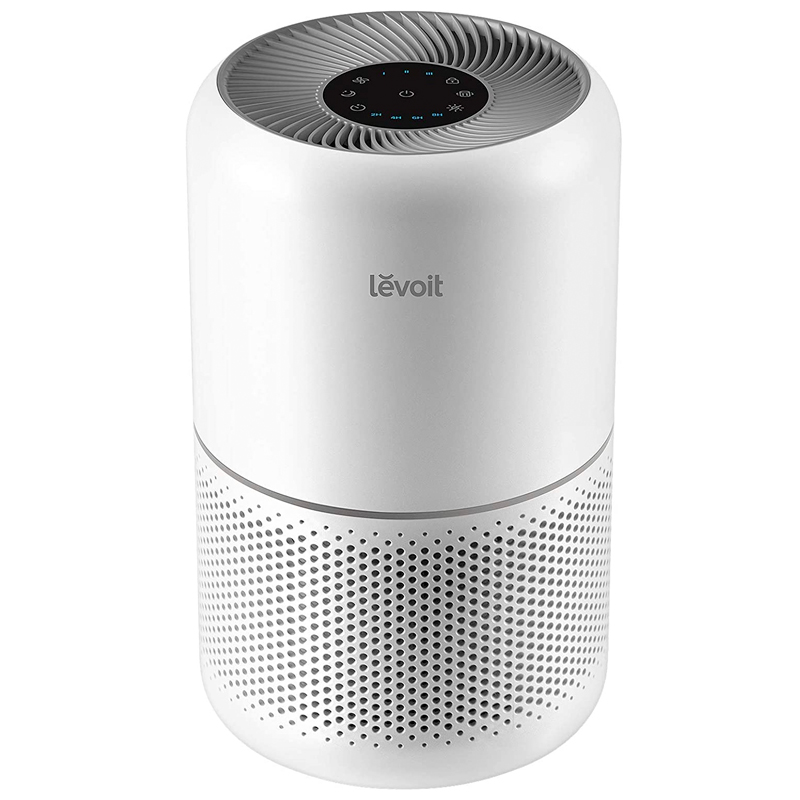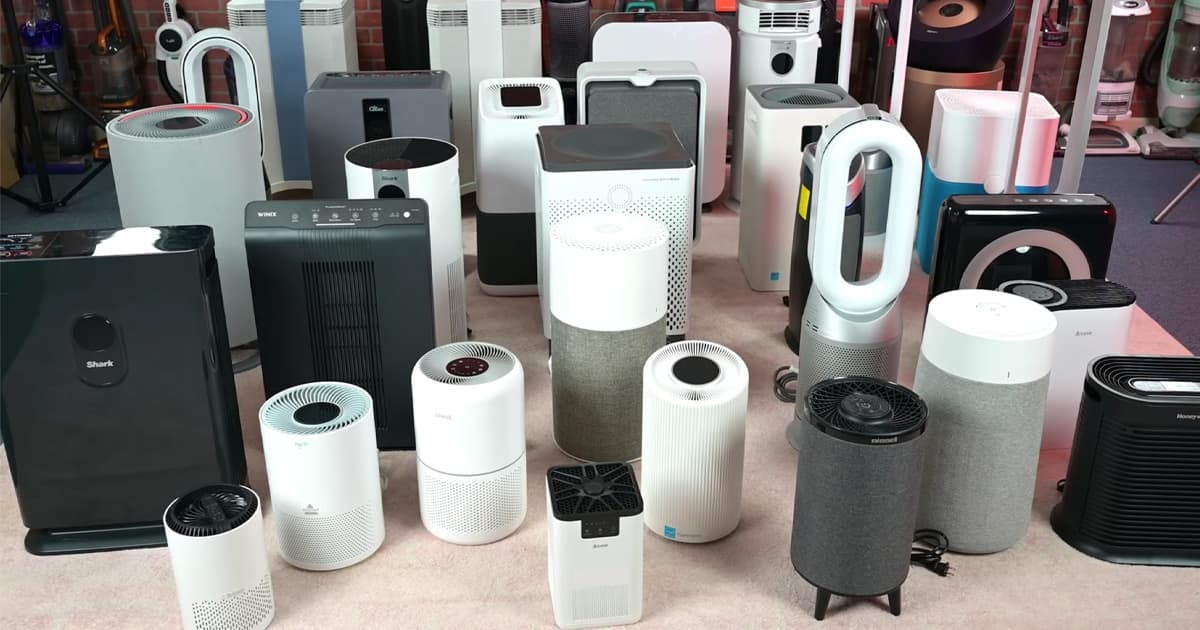
Best Air Purifiers – 2025
Welcome to Vacuum Wars' definitive guide to the best air purifiers of 2025! Our selections are based on in-depth independent and non-sponsored evaluations, focusing on essential factors like carbon filtration and HEPA filters, airflow settings, and noise levels.details
We also consider customer satisfaction scores to ensure you choose an air purifier that offers high value for your investment. Our recommendations are updated regularly to reflect the latest evaluation results and industry insights so you can easily find the ideal and best-rated air purifier for your home.- Effective in large spaces
- Advanced sensors for various pollutants
- Auto mode adjusts fan speed
- App integration for data monitoring
- Quiet yet powerful air projection
- Adjustable airflow angles
- Real-time air quality updates on LCD
- Lacks the nitrogen dioxide filter of BP04
- Considerable size for small rooms
- Exceptional HyperHEPA filtration
- Large coverage area up to 1125 sq ft
- Heavy-duty carbon filtration
- Programmable with daily/weekly schedules
- Quiet, despite powerful airflow
- Durable build with mobility wheels
- Bulky and heavy
- Lacks app integration
- No smart features
- Three-in-one functionality
- Auto air sensing
- Large room coverage
- Detachable magnetic remote
- HEPA filter included
- Good VOC reduction
- Quiet on most settings
- Above-average feature set
- Bulky, not compact
- Limited smart connectivity
- Manual function switching
- No app integration
- Excellent for small spaces
- Effective particle filtration
- Budget-friendly pricing
- Simple, user-friendly design
- Not effective for smoke, odors
- Lacks app integration
- No smart features
- Limited features
Air Purifier Basics
Almost all air purifiers have a HEPA filter connected to a fan, which processes the dirty air through the HEPA filter. This catches most of the small particles people want to filter out.
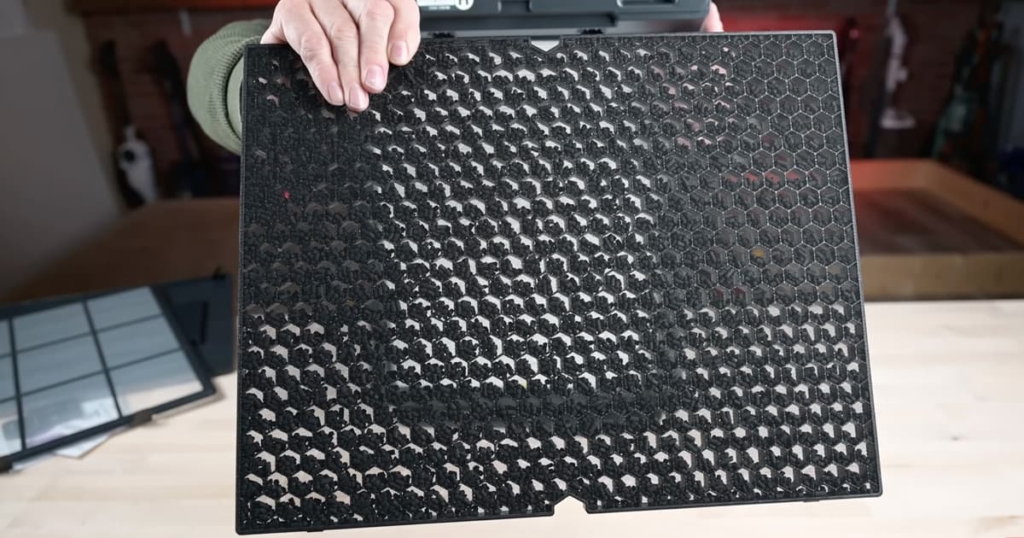
But, HEPA filters cannot filter smoke or gases. For that, you need some kind of carbon filter, which often takes the form of a filter with small charcoal pieces that absorb smoke and gases.
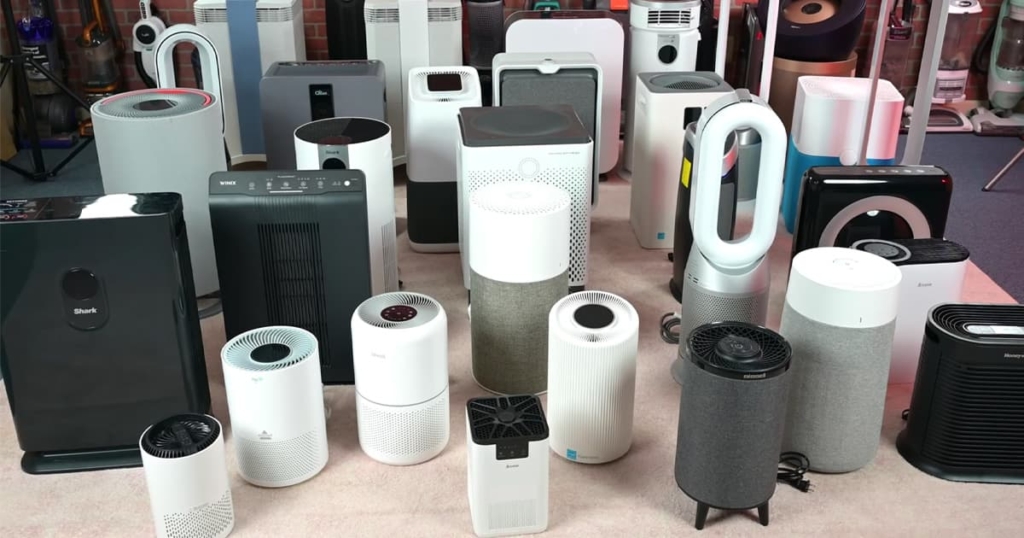
Adding a good carbon filter can be pricey, so you typically only find really good smoke and odor reduction with more expensive air purifiers.
How We Test Air Purifiers
We do a number of independent tests and scoring methodologies to evaluate air purifiers. Here's some of what goes into selecting our picks for the best air purifiers.

Airflow and Noise
We start by measuring their airflow to see how fast they can process air on each of their power settings, as well as their noise level to see how loud they are (quieter is always better).
RELATED: See our comparison of the Levoit Core 300 and a best-selling GermGuardian model.
Filtration and VOC Tests
We then conduct a fog test, releasing a set amount of fog into a ventless room and observing how quickly the air purifier can reduce the particles in the room on max power, as measured by a particle counter.
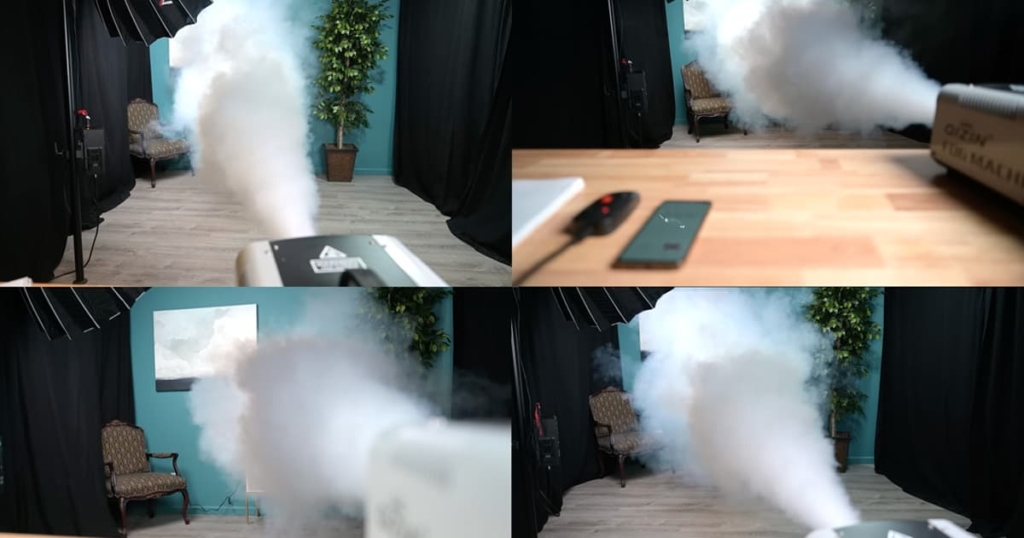
Additionally, we do a VOC smoke test by releasing exact amounts of incense smoke into a sealed refrigerator and measuring the reduction of smoke and other volatile organic compounds in a 5-minute test on max power. This effectively tests the efficiency of their carbon filters.
Did you know Formaldehyde can be found in homes? To learn more, check out this article from the EPA.
Features and Cost of Ownership
Furthermore, we have an extensive checklist that accounts for their special features, assigning weighted scores for each. For instance, some models have built-in particle sensors to adjust the fan speed based on the air's dirtiness, while others have lights that change color according to air quality.
Some of the features incorporated into our Best Air Purifier scoring algorithm:
- Auto Mode
- Power Levels
- Sleep Mode
- Timer
- Ozone Filter
- UV Purification
- HEPA Filtration
- Photocatalytic Ionization
- Wifi / App (Smart Features)
- Remote Control
- Air Quality Indicator
- PM2.5 Particle Sensor
- Alexa Compatibility
- Google Home Compatibilty
- Oscillation
- Formaldehyde Detection
- No2 Detection
- Aroma Therapy
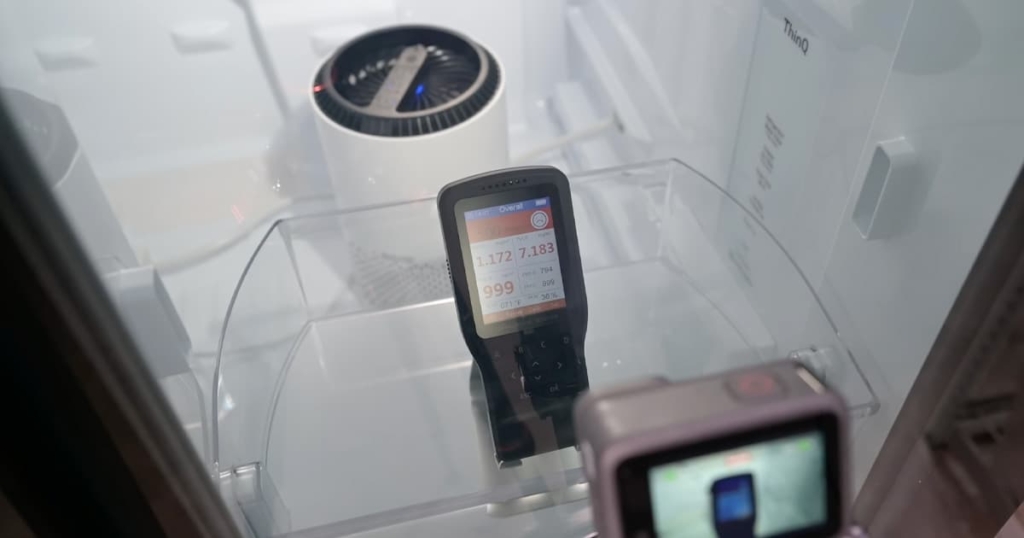
Some even have real-time graphs on their displays showing alerts and levels. We factor in the cost of replacing filters, cord length, warranty length, and compile all this information into a spreadsheet, which then helps us determine the best options according to our algorithm.
So when choosing an air purifier, consider these essential factors:
- Airflow and Power Settings: Check how fast the purifier can process air on various settings.
- Noise Level: Quieter models are generally more comfortable for continuous use, especially in living or sleeping areas.
- Efficiency Tests: Look for models that have been tested for their ability to reduce particles in the room quickly. Particle counters and VOC smoke tests can be particularly revealing.
- Special Features: Some purifiers come with built-in particle sensors, air quality lights, heaters, or even fans. These additional features can enhance usability and effectiveness.
- Maintenance Costs: Consider the cost of replacing filters and other maintenance requirements.
- Warranty and Build Quality: A longer warranty can indicate better build quality and manufacturer confidence in their product.
Making the Right Choice
Your selection will depend on your specific needs:
- For smaller spaces or budget constraints, a basic model with good particle filtration might be sufficient.
- If you need effective smoke and odor reduction, consider models with high-quality carbon filters.
- For the best overall performance, look for a model that balances top-notch filtration with useful features, reasonable maintenance costs, and a solid warranty.
Conclusion
Selecting the right air purifier involves balancing your needs with the features and capabilities of various models. Whether you're looking for a basic unit for a small room or a more advanced model for comprehensive air cleaning, understanding these key factors will guide you to the right choice for your home or office.
We think that the Dyson Big and Quiet Formaldehyde BP03 is a remarkable air purifier designed for substantial efficacy in both large and residential spaces. It excels with a combination of sophisticated technology and user-friendly features, setting a high standard in air purification. The BP03 model offers a comprehensive suite of sensors that monitor a range of pollutants including formaldehyde, nitrogen dioxide, and volatile organic compounds, ensuring optimal air quality. Its integration with the Dyson app allows for monitoring and managing air quality data conveniently from your smartphone, enhancing user interaction and control.
- Effective in large spaces
- Advanced sensors for various pollutants
- Auto mode adjusts fan speed
- App integration for data monitoring
- Quiet yet powerful air projection
- Adjustable airflow angles
- Real-time air quality updates on LCD
- Lacks the nitrogen dioxide filter of BP04
- Considerable size for small rooms
We think that the IQAir Health Pro Plus is a standout option among home air purifiers, offering exceptional performance in our comprehensive tests. This model, known for its extensive carbon filtration, effectively handles a variety of air quality challenges. It excels in both large residential and commercial spaces, providing up to 1125 square feet of coverage. With its triple-layer filtration system, including a pre-filter, V5 cell, and HyperHEPA filter, the Health Pro Plus captures ultrafine particles far smaller than standard HEPA filters can manage. Its robust design and multiple fan speeds, coupled with a programmable scheduler, ensure that it meets the needs of the most demanding environments while maintaining quiet operation. See our full review.
- Exceptional HyperHEPA filtration
- Large coverage area up to 1125 sq ft
- Heavy-duty carbon filtration
- Programmable with daily/weekly schedules
- Quiet, despite powerful airflow
- Durable build with mobility wheels
- Bulky and heavy
- Lacks app integration
- No smart features
The Shark Air Purifier 3-in-1 MAX (HC502) performed above average in our air cleaning tests. One standout feature is Shark’s Clean Sense IQ which automatically adjusts the air purifer’s settings based on changes in indoor air quality. We also found it to be high in value as it uniquely functions as an air purifier, fan and heater. See our full review.
- Three-in-one functionality
- Auto air sensing
- Large room coverage
- Detachable magnetic remote
- HEPA filter included
- Good VOC reduction
- Quiet on most settings
- Above-average feature set
- Bulky, not compact
- Limited smart connectivity
- Manual function switching
- No app integration
We think that the Kenmore PM1005 is an impressive contender in the budget air purifier category, especially considering its cost-effectiveness and specialized performance in particle filtration. Although it's a basic model with fewer features compared to higher-end air purifiers, it excels in its primary function—purifying air in smaller spaces. This Kenmore model lacks advanced smoke and odor reduction capabilities, which is typical for air purifiers in this price range. However, it makes up for this with strong particle filtration efficiency, making it an excellent choice for those needing a straightforward, no-frills air purifier for less extensive use.
- Excellent for small spaces
- Effective particle filtration
- Budget-friendly pricing
- Simple, user-friendly design
- Not effective for smoke, odors
- Lacks app integration
- No smart features
- Limited features
Best Air Purifier Guide: 30+ Air Purifiers Tested.
After testing more than 30 air purifiers from several top brands, here our our picks for best budget, value and air purifier overall.
Best Budget Air Purifier
In the budget category, it was almost a tie between the Levoit Core 300 and the Kenmore PM1005 (Amazon). In the end, the Levoit air purifier won out by just a few points.
Both are priced very competitively and perform exceptionally well for smaller spaces. Although they lack many advanced features and aren't the best for smoke or odor reduction (which makes sense when you take their low price into account), they excel in particle filtration in small spaces.
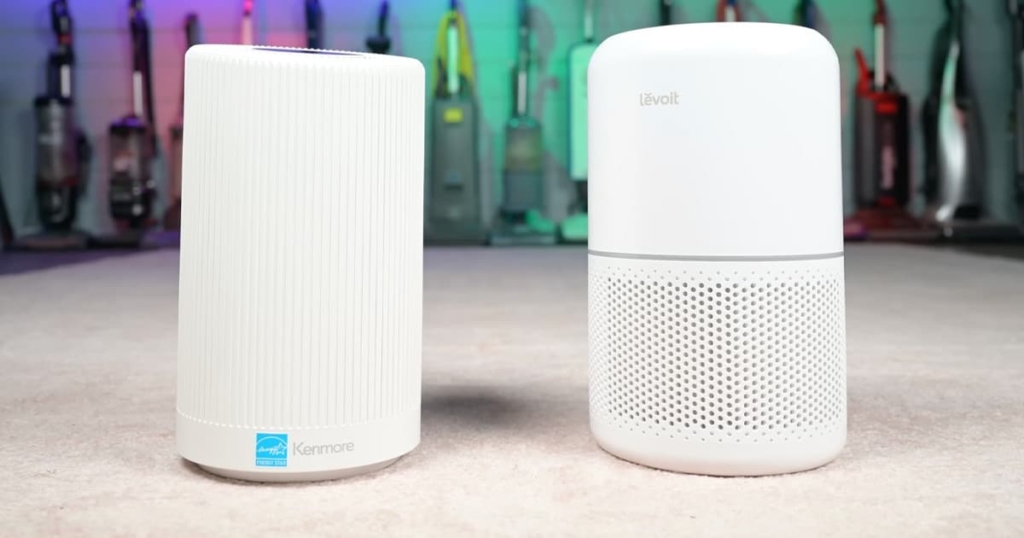
The Levoit Core 300 is one of the best selling air purifier models online. It's a trusted model that's been around forever and it has a ton of happy customers. The Kenmore is a newer mode, but early reviews look very promising.
Tip: For those looking for smart features including the ability to control their air purifier from an app, give the Levoit Core 300S (Amazon) a look. It is a slightly more advanced version of the Core 300 model.
Best Value Air Purifier
If you need an air purifier that has good smoke and odor reduction capabilities, you should consider our next pick, the Winix 5500-2.
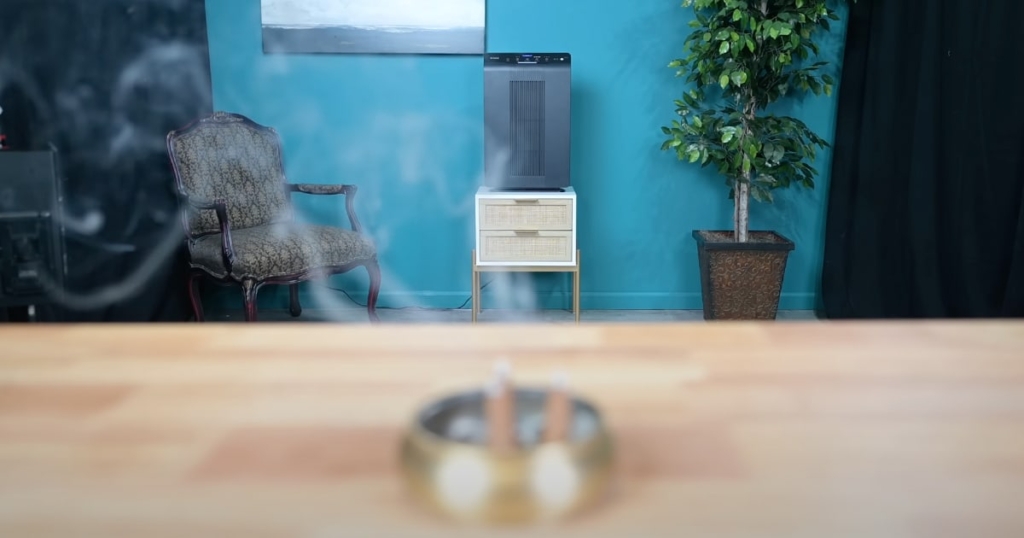
The Winix 5500-2 won our best value category. In many ways this Winix model is the biggest story in this competition. Despite being relatively affordable, it performed like a much more expensive air purifier.
How much more expensive? It scored eighth overall in this year's competition, but is by far the cheapest on that top eight list.
| Air Purifier Ranking | Price |
|---|---|
| #1 | $1,099 |
| #2 | $1,369 |
| #3 | $750 |
| #4 | $899 |
| #5 | $650 |
| #6 | $769 |
| #7 | $750 |
| #8 (Winix 5500-2) | $250 |
Its high-quality carbon filter for gases and VOCs is uncommon for its price range. And, it boasts several features, such as a particle counter and air quality indicator light.
Additionally, it performed above average in our filtration tests, scoring much better than average. Winix air purifiers in general, and the 5500-2 model specifically are quite popular online. Reviews for the 5500-2 are very positive.
Best Air Purifier Overall
For the best overall air purifier of 2023 the winner was a big surprise. the Dyson Big+Quiet Formaldehyde took top honors.
Up until recently, the IQAir GC MultiGas and IQAir HealthPro Plus had dominated our tests. And, if you had asked us a few weeks ago, we would have told you that no air purifier would beat those IQAir models in the premium air purifier category.
However, the recently released Dyson Big+Quiet model changed the game. Though the IQAir units still slightly outperformed the Dyson in filtration, the Dyson Big+Quiet Formaldehyde had impressive features that boosted its overall score.
The Dyson actually received our best scores ever in the features category. In contrast, the IQAir models were the two worst scoring air purifiers in this year's competition.
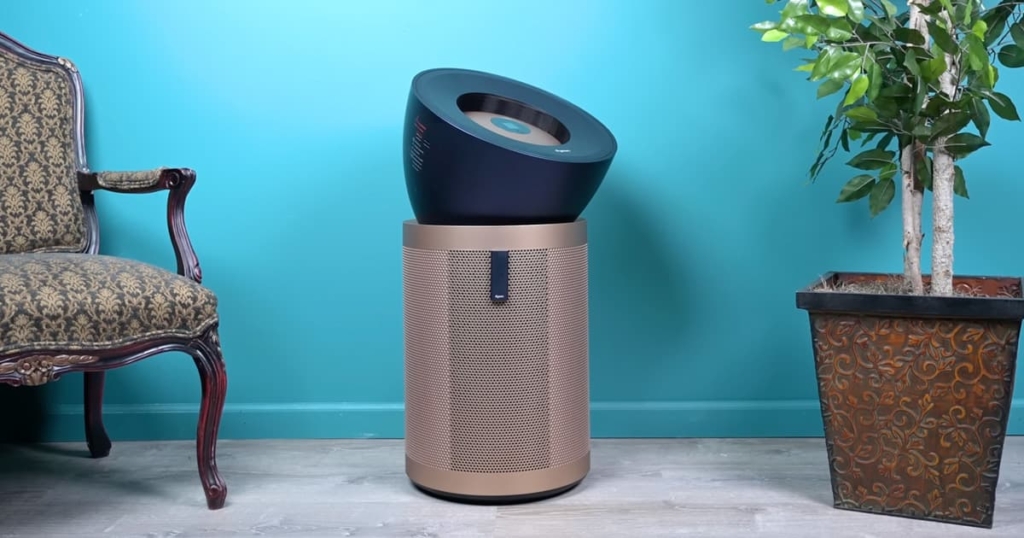
This competition was close in many ways. For example, the Dyson Big+Quiet was basically tied with the IQAir HealthPro Plus in our TVOC smoke tests and it was pretty close to them IQAir models in our particle test, too.
From a real-time particle display, VOC display, nitrogen, and formaldehyde sensors, to an app with data history, adjustable fan, lower filter replacement costs, and a modern design, it was the clear winner.
Downsides? The Dyson Big+Quiet is not only Dyson's most advanced air purifier, it's also their most expensive.
Best Air Purifiers for 2023
To summarize, for our budget pick, either the Kenmore or the Levoit Core 300 would suffice. The Winix 5500-2 is the best value, and the Dyson Big+Quiet Formaldehyde is our top pick for best overall in 2023.
Air Purifier Basics
Almost all air purifiers have a HEPA filter connected to a fan, which processes the dirty air through the HEPA filter. This catches most of the small particles people want to filter out.

But, HEPA filters cannot filter smoke or gases. For that, you need some kind of carbon filter, which often takes the form of a filter with small charcoal pieces that absorb smoke and gases.

Adding a good carbon filter can be pricey, so you typically only find really good smoke and odor reduction with more expensive air purifiers.
How we Test Air Purifiers
We do a number of independent tests and scoring methodologies to evaluate air purifiers. Here's some of what goes into selecting our picks for 2023's best air purifiers.

Airflow and Noise
We start by measuring their airflow to see how fast they can process air on each of their power settings, as well as their noise level to see how loud they are (quieter is always better).
RELATED: See our comparison of the Levoit Core 300 and a best-selling GermGuardian model.
Filtration and VOC Tests
We then conduct a fog test, releasing a set amount of fog into a ventless room and observing how quickly the air purifier can reduce the particles in the room on max power, as measured by a particle counter.

Additionally, we do a VOC smoke test by releasing exact amounts of incense smoke into a sealed refrigerator and measuring the reduction of smoke and other volatile organic compounds in a 5-minute test on max power. This effectively tests the efficiency of their carbon filters.
Did you know Formaldehyde can be found in homes? To learn more, check out this article from the EPA.
Features and Cost of Ownership
Furthermore, we have an extensive checklist that accounts for their special features, assigning weighted scores for each. For instance, some models have built-in particle sensors to adjust the fan speed based on the air's dirtiness, while others have lights that change color according to air quality.

Some even have real-time graphs on their displays showing alerts and levels. We factor in the cost of replacing filters, cord length, warranty length, and compile all this information into a spreadsheet, which then helps us determine the best options according to our algorithm.
However, this is still our opinion, and we haven't tested every single air purifier out there. Please take our winners with a grain of salt.








